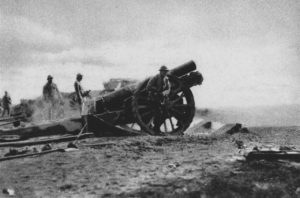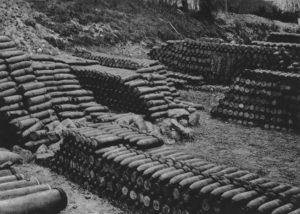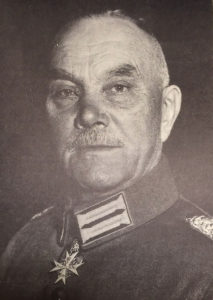“God fights on the side with the best artillery”- Napoleon Bonaparte
The most common weapons during World War I were the bolt-action rifles carried by the overwhelming majority of the infantry of all sides. Despite that, the weapons that caused the most casualties during the war were artillery pieces. Perhaps no weapon group benefitted more from the industrialization of the late 19th century than artillery, large howitzers especially, but field pieces and trench mortars (minenwerfers) as well. The industrial scale they were produced on changed the nature of the weapons themselves, the longing to break the stalemate on the Western Front would change the nature of how they were employed.

Artillery throughout much of war has always been a supporting weapon, granted one capable of delivering death on a massive scale, that kept enemies suppressed while infantry or cavalry could move into position to deal a decisive blow. French pre-war doctrine held that artillery pinned enemy infantry down and suppressed hostile defensive artillery while friendly infantry moved in (1). However, the total inability of infantry to take defensive positions with such minimal support early on in World War I quickly changed that. The artillery corps would soon move from a supporting role to center stage.

The first phase of artillery usage in the war, was employing an “annihilating fire” (2). Prior to an infantry attack, the artillery would maintain a 4-5 hour “drumfire”. They would pound the enemy trenches with every caliber available, using field guns (lighter artillery), howitzers (heavier longer ranged pieces), and mortars (light trench artillery that shoots an explosive projectile at a short range at a very steep angle) (3). Clearly the intent was to so totally pulverize the enemy lines that nothing would be left alive or any defensive structure would be so totally smashed it would offer no protection to its occupants.

Once the way was clear, the infantry could then move in and secure the area. As French general Phillippe Pétain is quoted as having said, “The artillery conquers, the infantry occupies (4). These tactics were employed at the Battle of the Somme and again at Verdun. Yet these battles are famously remembered as the poster children of the war of attrition, and rightfully so. That is because though “annihilating fire” pulverized positions, it also chewed up the ground in front of them. Therefore the infantry was slowed in their own advance and susceptible to an enemy counterattack of an enemy simply moving up to reinforce their own positions.

German colonel Georg Bruchmüller would be the man who solved this deadlock. Combining his own innovations and mastering those of others, Bruchmüller would revolutionize artillery bombardment. Rather than “annihilating fire” he proposed “neutralizing fire”, which served to cripple and stun an enemy rather than obliterating them. He cut the bombardment down from days or weeks to just a few hours, though the bombardment was far more continuous and violent. The key was striking communication and command centers during the first phase, defensive artillery batteries in the second, and then shifting focus to the infantry trenches(5). The effect this would have when employed correctly would be both utterly demoralizing and a tactical nightmare. This artillery attack was immediately followed by an infantry assault led by the Storm Battalions (6).

It was this innovation that would finally break the stalemate of the Western Front. By adopting these tactics, alongside the use of tanks and Storm Troops, both sides finally had a means of smashing through enemy lines. To this day, the idea of sudden violent artillery strikes with strategic targets of Brüchmuller is the basis of modern artillery bombardments.
- Balck, William, Development of Tactics- World War, 1922, pg. 30.
- Zabecki, David T. “Military Developments of World War I .” International Encyclopedia of the First World War.
- Balck, Development of Tactics, pg. 62.
- Zabecki, “Military Developments of World War I.
- Ibid.
- Ibid.
- Ibid.
